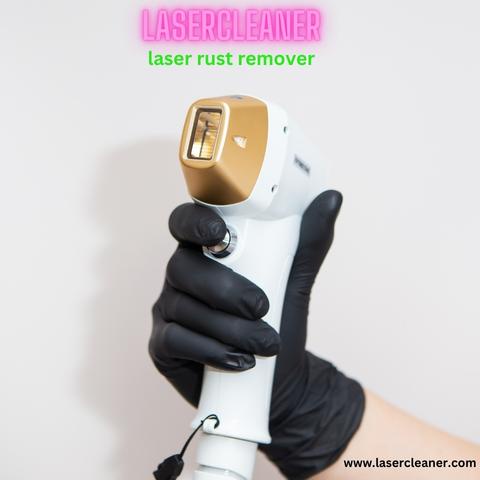Laser rust removal has revolutionized the process of eliminating rust from various surfaces. This cutting-edge technology offers a highly efficient and precise method for restoring metal surfaces to their original state. In this guide, we'll delve into the intricacies of laser rust remover, outlining its benefits, application methods, safety precautions, and practical tips for achieving optimal results.
Understanding Laser Rust Removal: laser rust remover operates on the principle of selective absorption of laser energy by rust particles. When a laser beam is directed onto a rusted surface, the energy is absorbed by the rust, causing it to heat up rapidly. As the temperature rises, the rust vaporizes or converts into a loose oxide layer, which can then be easily removed using compressed air or a vacuum system.
Benefits of Laser Rust Removal:
- Precision: laser rust remover offers unparalleled precision, allowing for targeted treatment of rusted areas without damaging the surrounding material.
- Efficiency: Compared to traditional methods such as sandblasting or chemical treatments, laser rust removal is significantly faster and more efficient.
- Environmentally Friendly: Since laser rust remover does not involve the use of harsh chemicals or abrasive materials, it is an environmentally friendly solution for rust removal.
- Versatility: Laser rust removal can be applied to a wide range of surfaces, including steel, iron, aluminum, and more.
Application Methods:
- Surface Preparation: Before beginning the laser rust removal process, it's essential to clean the surface thoroughly to remove any loose debris or contaminants.
- Laser Settings: Adjust the laser parameters such as power, pulse duration, and spot size according to the type and thickness of the rusted material.
- Laser Scanning: Utilize a scanning system to ensure uniform coverage and effective removal of rust from the entire surface.
- Post-Treatment: After the rust has been removed, inspect the surface for any remaining traces of rust or oxide, and apply a protective coating if necessary.
Safety Precautions:
- Protective Gear: Wear appropriate personal protective equipment, including safety glasses, gloves, and protective clothing, to shield against potential hazards associated with laser operation.
- Ventilation: Ensure adequate ventilation in the work area to dissipate any fumes or particles generated during the laser rust removal process.
- Training: Only trained professionals should operate laser rust removal equipment to minimize the risk of accidents or injuries.
- Fire Safety: Take precautions to prevent the ignition of flammable materials, as the laser beam can generate heat capable of causing fires.
Practical Tips:
- Test on a Small Area: Before treating the entire surface, conduct a test run on a small, inconspicuous area to determine the optimal laser settings and assess the effectiveness of the process.
- Regular Maintenance: Implement a regular maintenance schedule to prevent the recurrence of rust and prolong the lifespan of the treated surface.
- Consultation: If unsure about the suitability of laser rust removal for a particular application, seek guidance from experienced professionals or equipment manufacturers.
Conclusion: laser rust remover is a cutting-edge technology that offers a precise, efficient, and environmentally friendly solution for eliminating rust from metal surfaces. By following the guidelines outlined in this comprehensive guide, you can harness the power of laser technology to effortlessly restore rusted surfaces to their former glory.


No comments yet